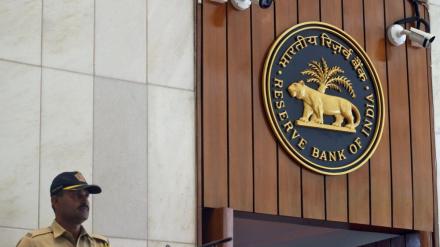Amid the International Monetary Fund’s warning that India’s general government debt could exceed 100% of Gross Domestic Product (GDP) in the medium-term, a Reserve Bank of India paper said the ratio could fall to 73.4% by 2030-31. The debt reduction would be supported by the spending on social and physical infrastructure, climate mitigation, digitalisation and skilling of the labour force, the authors of the paper, led by deputy governor Michael Debabrata Patra argued.
“… we reject the IMF’s contention that if historical shocks materialise, India’s general government debt would exceed 100% of GDP in the medium-term and hence further fiscal tightening is needed,” the authors wrote in the article, the views in which are not attributable to the RBI.
“Empirical findings show that medium-term complementarities between judicious fiscal consolidation and growth outweigh the short-run costs,” they added.
Recently, the IMF forecast that India’s general government debt could overshooting 100% of the GDP under a worst-case scenario by FY28.
India’s general government debt, which comprises the debts of the Centre and states, had soared to 88% in FY21, the highest in at least four decades, as government expenditure rose during the Covid-19 pandemic, amid a revenue slump. It has moderated since to around 81% in FY23 with the Centre and states resorting to fiscal consolidation with a thrust on capex.
“Our simulations reveal that ..with recalibration of government expenditure, the general government debt-GDP ratio is projected to decline to 73.4% by 2030-31, around 5 percentage points lower than the IMF’s projected trajectory of 78.2%,” the RBI paper noted. In the pre-pandemic FY20, India’s general government debt was 75.2% of GDP.
This was noteworthy as the debt-GDP ratio is projected to rise from 112.1% in 2023 to 116.3% in 2028 for advanced economies and from 68.3% to 78.1% for emerging and middle-income countries.
Recognising that some parts of capital expenditure are not strongly growth-inducing while some parts of revenue expenditure can actually result in physical and human capital formation, the authors redefined capital expenditure to exclude defence and included social and economic expenditure covering allocations towards health, education, skilling, digitalisation and climate risk mitigation. “We call this developmental expenditure (DE), which is budgeted at Rs 13.9 trillion (4.2% of GDP) in 2024-25 as against the provision of Rs 11.1 trillion (3.4% of GDP) for the traditionally defined capex,” they said.
The interim budget for 2024-25 has placed the revised estimate of the gross fiscal deficit (GFD) for 2023-24 at 5.8% of GDP, lower than the budget estimate (BE) of 5.9%. Reiterating its commitment to attain a GFD of 4.5% by 2025-26, a GFD of 5.1% has been budgeted in 2024-25 – a consolidation of 71 basis points over 2023-24 (RE). The budget also sustains the impetus provided to capital expenditure in the post-pandemic period, increasing its share to 3.4% of GDP in 2024-25. The improvement in the quality of expenditure is reflected in the decline in the share of the revenue deficit to 38.8% and an increase in the share of capital outlay to 55.7% of the GFD.
